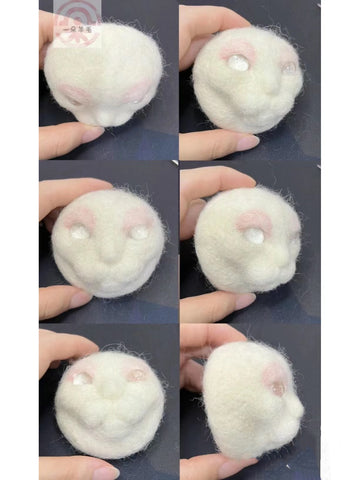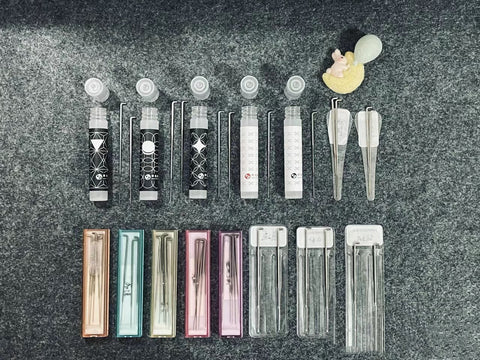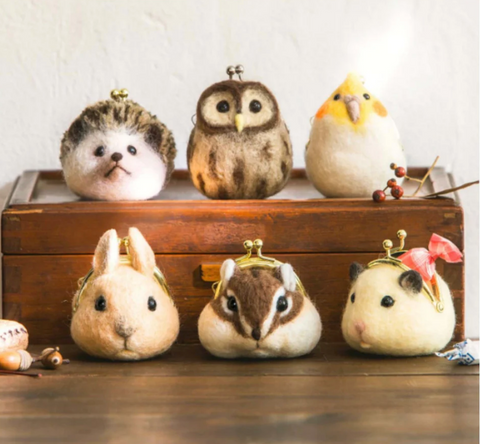- Armature
- Wet felting
- Nuno felting
- Fiber art
- Eco-friendly
- Upcycling
- Locks
- Crafting
- DIY
- Handmade
- Hobby
- Techniques
- Tips
- Tricks
- Materials
- Designs
- Patterns
- Inspiration
- Sculpture
- Animals
- Plants
- Characters
- Accessories
- Home decor
- Gifts
- Needlecraft
Needle felting is a fun and easy craft that allows you to create unique and beautiful objects using only a needle and wool. It's a great hobby for beginners who want to experiment with different materials and techniques. In this article, we'll cover the basics of needle felting, including the tools you'll need, the steps to get started, and some tips and tricks for success.
What is Needle Felting?
Needle felting is a process of transforming wool fibers into a solid, three-dimensional object using a special needle. The needle has tiny barbs that catch and tangle the fibers together, creating a dense, felted surface. With needle felting, you can create anything from small, intricate figurines to large, sculptural pieces.
Tools for Needle Felting
To get started with needle felting, you'll need a few basic tools. These include:
-
Felting needles: Felting needles come in different sizes and shapes, and are used to create different effects and textures in your felting. The most common type of needle is a single-barbed needle, which is used for shaping and sculpting.
-
Wool fibers: Wool fibers come in a variety of colors and textures, and can be purchased in roving form or as individual locks. Choose high-quality wool for the best results.
-
Foam pad: A foam pad is used as a surface to work on while felting. It provides a soft, supportive surface for your needle and prevents it from breaking.
Getting Started with Needle Felting
Once you have your tools, you're ready to start felting! Follow these steps to create your first felted object:
needle felting animals kit for starters with tutorials
-
Choose a design: Decide what you want to make, and sketch out a rough design. Keep it simple for your first project.
-
Prepare your wool: Pull apart your wool fibers and lay them out on your foam pad. Arrange the fibers in the shape of your design, adding more wool as needed.
-
Begin felting: Hold your felting needle perpendicular to your wool and begin poking it into the fibers. Start at the center of your design and work outward, using a firm but gentle touch.
-
Shape and sculpt: Use your needle to shape and sculpt your design as you go. Pay attention to the direction of the fibers and how they are laying.
-
Build up layers: Continue adding more wool and felting it in place, building up layers and creating a solid, three-dimensional object.
Tips and Tricks for Needle Felting
Here are a few tips and tricks to keep in mind as you experiment with needle felting:
-
Start with simple shapes: If you're new to needle felting, start with simple shapes like balls or cylinders before moving on to more complex designs.
-
Be patient: Needle felting can take time and practice to get the hang of. Don't get discouraged if your first attempts aren't perfect!
-
Use a light touch: Use a gentle, light touch when felting to avoid breaking your needle.
-
Experiment with color and texture: Play around with different colors and textures of wool to create unique effects and designs.
-
Have fun! Needle felting is meant to be a fun and creative hobby. Don't be afraid to experiment and try new things.
Conclusion
Needle felting is a versatile and rewarding craft that's easy to learn and fun to experiment with. By following these basic steps and tips, you'll be on your way to creating beautiful and unique felted objects in no time. So grab your tools and some wool, and get felting!
Related keywords: felting, needle felting, wool fibers, felting needles, foam pad, three-dimensional object, sculpting, shape, texture, color, creativity.
Here are some additional related keywords and phrases:
- Roving: This refers to a bundle of wool fibers that have been carded and prepared for spinning or felting.
- Locks: These are individual sections of wool that have been sheared from a sheep or other animal. They can be used for felting or spinning.
- Armature: This is a framework or structure that is used as a base for a felted sculpture. It can be made from wire, pipe cleaners, or other materials.
- Wet felting: This is a different felting technique that involves using water, soap, and agitation to bind wool fibers together into a felted fabric.
- Nuno felting: This is a technique that combines wool fibers with a lightweight fabric, such as silk or cotton, to create a felted textile.
- Fiber art: This is a broader category of art that includes all types of artwork made from natural or synthetic fibers, such as weaving, knitting, crochet, and felting.
- Eco-friendly: Felting is a sustainable and eco-friendly craft, as it uses natural materials and does not require the use of harsh chemicals or dyes.
- Upcycling: Felting can be used as a way to repurpose old or unused wool clothing or blankets into new, useful objects. This is a form of upcycling or creative reuse.

Electric needle felting machine for upgrating your needle felting skills





